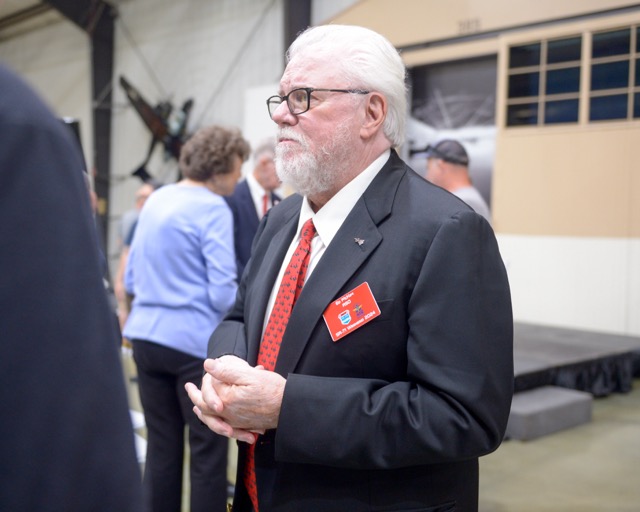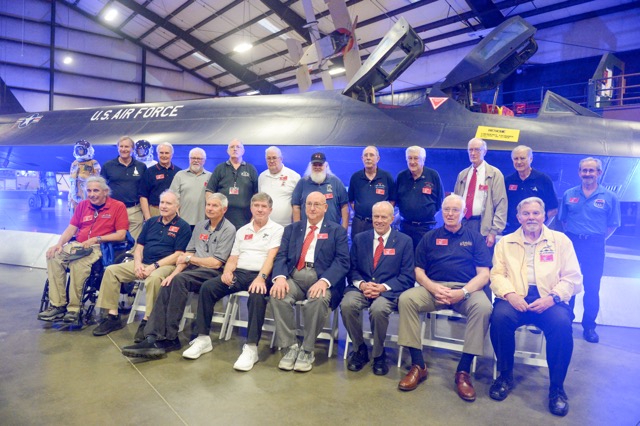Blackbird
By Jerry Soifer
As a volunteer docent at the March Field Air Museum, Perris resident Rick Watts has greeted thousands of visitors, many drawn to the aviation exhibits by the titanium-plated, triple-sonic SR (Strategic Reconnaissance)-71 spy plane.
One particular visitor some years back, a former Soviet fighter pilot, remains riveted in Watts’ memory.
Watts recalls being drawn to the gentleman as he spied him sitting alone, staring at the delta-winged plane for 20 minutes without moving. He shares that the former pilot related that he emigrated to the United States after the Iron Curtain fell and traveled to March upon hearing an SR-71 was at the reserve base museum.
On Saturday, nearly 600 visitors were drawn to the museum by that same mystique of the groundbreaking aircraft known as the “Blackbird.” Continuing through Sunday, Blackbird fans gathered for a reunion of pilots, reconnaissance officers, and ground crew, who shared their experiences with the mythical jet that was first put into action in 1964.
Retired, Reconnaissance System Officer (RSO) Maj. E. D. McKim recalled his experience from August 1981, while flying over the DMZ above North and South Korea. North Korea fired two Soviet SA-2 surface-to-air missiles (SAMs), which McKim detected on his instruments.
He vividly remembers, naturally, how his anxiety rose as the missile neared, but exploded two to three miles away, causing no damage.
It is the only acknowledged missile firing at a Blackbird.
The sophisticated electronics of the aircraft were able to gather intelligence in seconds from 85,000 feet, surveying 100,000 square miles of Earth’s surface per hour.
Watts the docent, reports the former Soviet pilot he met years ago, recalled his futile chase of an SR-71. In his telling, he was on patrol when Soviet authorities told him there was an SR-71 in his vicinity. The pilot said he accelerated his MiG to 50,000 feet in what proved to be a futile attempt to fire an air-to-air missile at the jet he never saw. Not until he stepped in the doors of the March Museum years later.
Not one Blackbird was lost to enemy fire in over 30 years of duty. Part of the Blackbird’s aura was its seeming invincibility.
Speaking on a panel discussion at the March Museum Saturday, USAF Lt. Col. Raymond E. (Ed) Yeilding said that invincibility could never be taken for granted.
As the SR-71 was being retired in March 1990, Yielding, along with co-pilot USAF Lt. Col. Joseph T. Vida, set four speed records in the aircraft: Coast to Coast, in 67 minutes 54 seconds; LA to Washington, DC, in 64 minutes 20 seconds; Kansas City to DC, in 25 minutes 59 seconds; and St. Louis to Cincinnati, in 8 minutes 33 seconds.
Following its original retirement, the Blackbirds were twice re-commissioned and finally mothballed in 1999. Its capabilities are now covered by UAV’s (drones) and satellites.
The Blackbird on exhibit at the March Museum, was originally delivered to the United States Air Force by the manufacturer, Lockheed in 1967. Designated 61-7975, the 26th of 32 built, it flew 82 sorties during the Vietnam War and “over hot spots throughout the world.” It is on loan from the National Museum of the USAF.
For More Veteran News Visit www.zapinin.com/veterans.



